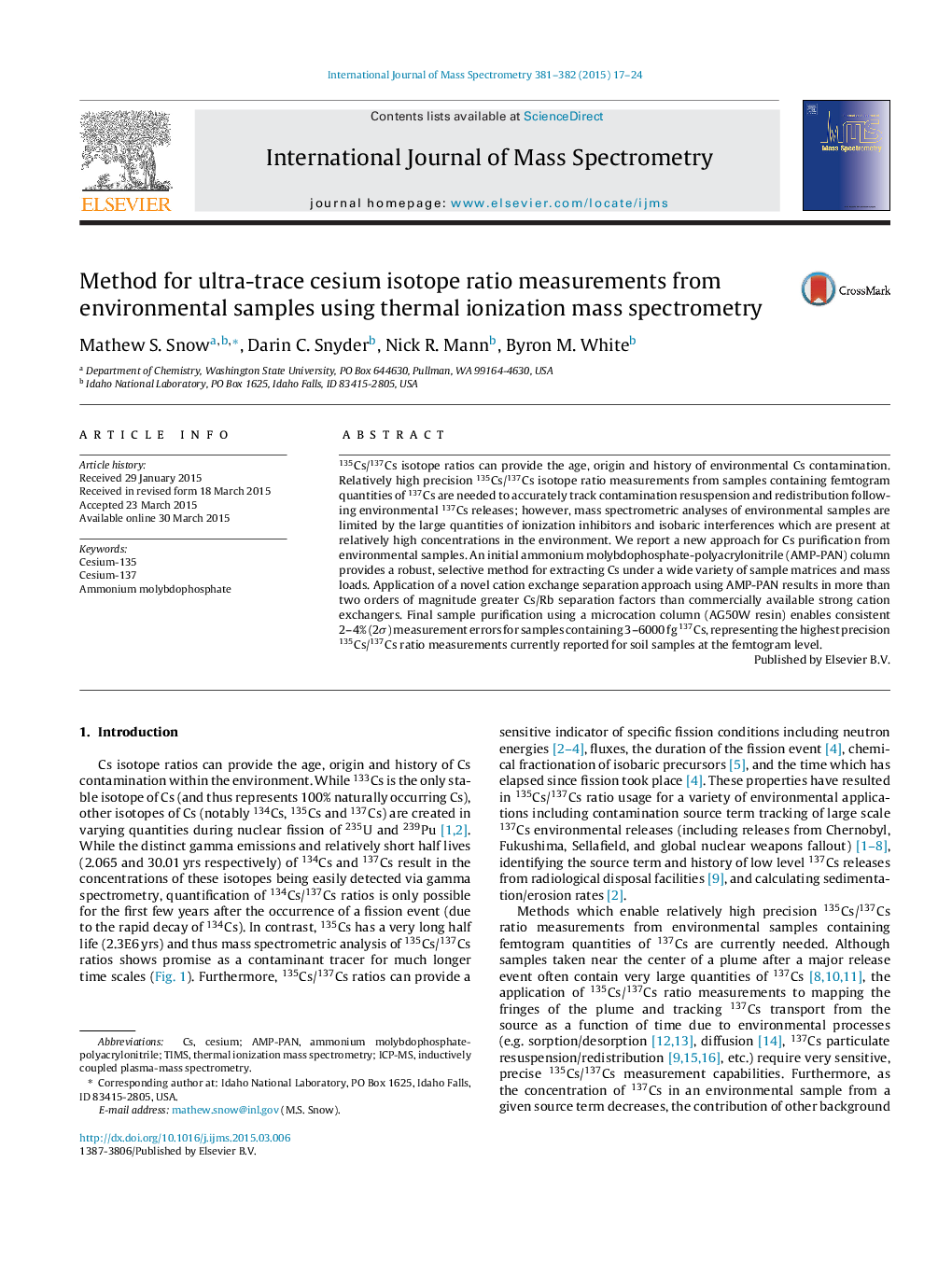| Article ID | Journal | Published Year | Pages | File Type |
|---|---|---|---|---|
| 1193598 | International Journal of Mass Spectrometry | 2015 | 8 Pages |
•High precision 135Cs/137Cs analyses are needed for tracking environmental 137Cs.•TIMS requires high purification from ionization inhibitors (e.g. alkali metals).•>100 times higher Cs/Rb separation factors obtainable via AMP-PAN than AG50W resin.•New method enables 2–4% 135Cs/137Cs 2σ errors from samples containing 3 fg of 137Cs.
135Cs/137Cs isotope ratios can provide the age, origin and history of environmental Cs contamination. Relatively high precision 135Cs/137Cs isotope ratio measurements from samples containing femtogram quantities of 137Cs are needed to accurately track contamination resuspension and redistribution following environmental 137Cs releases; however, mass spectrometric analyses of environmental samples are limited by the large quantities of ionization inhibitors and isobaric interferences which are present at relatively high concentrations in the environment. We report a new approach for Cs purification from environmental samples. An initial ammonium molybdophosphate-polyacrylonitrile (AMP-PAN) column provides a robust, selective method for extracting Cs under a wide variety of sample matrices and mass loads. Application of a novel cation exchange separation approach using AMP-PAN results in more than two orders of magnitude greater Cs/Rb separation factors than commercially available strong cation exchangers. Final sample purification using a microcation column (AG50W resin) enables consistent 2–4% (2σ) measurement errors for samples containing 3–6000 fg 137Cs, representing the highest precision 135Cs/137Cs ratio measurements currently reported for soil samples at the femtogram level.
Graphical abstractFigure optionsDownload full-size imageDownload high-quality image (103 K)Download as PowerPoint slide
